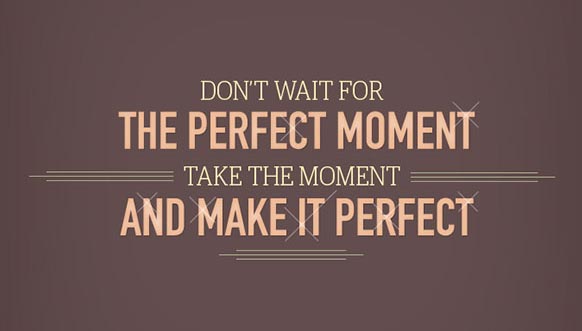Success Advice
6 Steps To Tap Into Your ‘Flow’
Have you ever been so focused and engaged in a task that it feels like an out of body experience? You’ve got the midas touch- everything you do is done with ease, you completely lose track of time, no such thing as hunger or weariness, your ego just disappears from consciousness.
It’s called ‘flow.’
Athletes break records when they are in flow, musicians write hit songs because of flow, entrepreneurs seal deals when possessed by flow.
When it comes to understanding this incredible state that is available to all humans, Mihaly Csikszentmihalyi is the expert credited with identifying this incredible peak experience he refers to as flow. Your nervous system is only capable of processing about 110 bits of information per second, having a conversation with one person takes about 60 bits per second- the reason you struggle to listen to two people at the same time. When you enter into a state of flow however, every bit of your processing power is directed to the task. You become blissfully possessed by the work that you are doing.
Everything else disappears.
The key to human happiness and success, according to Mihaly, is the ability to tap into your state of flow.
Here are the 6 steps to tap into your flow:
1. Set the stage
Whatever task or work you are engaged in, create the optimum environment for flow to happen with an organised and tidy area free from ANY distractions. Some of the world’s greatest writers have a special room or space where they will only engage in writing- that becomes the place they enter into their flow state.
Where is your flow space? It could be in your attic, basement, or the quiet corner of your favourite coffee shop.
2. Intrinsic Motivation
Flow happens when what you are doing becomes worth it for its own sake. You need to value and enjoy your work ultimately and above anyone else; regardless of how others may profit or be affected from what you do.
Here is a great flow question: if you never received any recognition for what you’re doing, would you still love doing it?
3. A Trigger
This is where physiology meets psychology; a physical trigger to set off an emotional peak state. Tony Robbins is known for jumping up and down on an exercise trampoline and clapping his hands before walking out to a conference. A great technique is to squeeze your middle finger and thumb together and then think of an ecstatic flow experience in the past- a previous victory, accomplishment, or pinch-yourself moment. Then release and bring your mind back to an everyday mundane experience. Practicing stepping in and out of a heightened state.
From now on, every time you squeeze your fingers together your mind will immediate be taken to a flow experience.
4. No Destination
Once you have your mind primed and in flow, engage in the task at hand. A crucial key for being in flow is to cast away any expectations. Flow cannot be put into a box. Don’t cut flow off by only getting a certain amount of work done, and don’t try and force flow by continuing to engage when the state is over.
5. Too Deep, Too Shallow
Flow is the perfect balance between skill and challenge. If your skill level is too high for the task, then you don’t have enough of a challenge to be in flow. You fall into a state of “comfort.” On the other hand, if the challenge is too high, you go into a state of “arousal.” This leads to frustration because you don’t have the skill to accomplish your task.
Whatever work you engage in, make sure that you are not over-qualified, nor under-qualified. The challenge should be just a little beyond your skill- to stretch you, but not break you!
6. Time-Out
The stages of getting into flow can be broken down into: Struggle – Relaxation – Flow – Consolidation. The final stage of consolidation is crucial for your brain to absorb and remember the new skills it was able to learn. The temptation will always be to chase after that next flow state. But you need to take a break and let your nervous system recover from the immersed experience.
Lastly, flow states must be incorporated in a holistic manner. You do not want to become dependant on a flow state to function regularly. Flow addiction can be very detrimental. This is what turns a person into an unhealthy workaholic- continually chasing the flow experience. Be engaged in a number of different creative tasks. This will allow you to enjoy the flow state without becoming dependant upon a single one that dominates your life.

Entrepreneurs
The Essential Skills Every Entrepreneur Needs In 2026
Success in the digital age isn’t about luck. It’s about mastering the skills that separate dreamers from doers.

When I was 22 years old, I started my first side hustle as a ghostwriter. (more…)
Did You Know
The Success Patterns You Inherited (And Didn’t Notice)
Your family history may hold the key to why you think, act, and feel the way you do today.

Who are you? Your experiences and your family’s narratives and legacies contribute to your identity. Your ancestry contains individual traits and forces that have been inherited over the years. It also carries the fights and victories of your forebears and older family members. (more…)
Shift Your Mindset
11 E’s That Define Every Great Leader And Why Most People Miss Them
If you’ve ever felt the pull to lead, this is your roadmap to turning inner potential into lasting influence.

What Is Leadership, Really?
Leadership is far more than a title or position. It’s the ability to envision a future, inspire others, and align people toward a shared goal. (more…)
Personal Development
This Silent Habit Might Be Sabotaging Your Career
Your temper might be costing you more at work than you realize. Here’s why it matters.

You may be the last to know that you’re walking around with a giant chip on your shoulder. Meanwhile, your coworkers are giving you a wide berth. (more…)
-

 Success Advice4 weeks ago
Success Advice4 weeks agoInside the TikTok Resume Hack That’s Fooling Recruiters (For Now)
-

 Change Your Mindset3 weeks ago
Change Your Mindset3 weeks agoThe One Leadership Habit That Separates the Great From the Forgettable
-

 Personal Development3 weeks ago
Personal Development3 weeks agoThis Silent Habit Might Be Sabotaging Your Career
-

 Business2 weeks ago
Business2 weeks agoWhy Your E-Commerce Fulfilment Is Probably Broken (And How to Fix It)
-

 Shift Your Mindset2 weeks ago
Shift Your Mindset2 weeks ago11 E’s That Define Every Great Leader And Why Most People Miss Them
-

 Did You Know1 week ago
Did You Know1 week agoThe Success Patterns You Inherited (And Didn’t Notice)
-

 Business1 week ago
Business1 week agoThe Hidden Money Pit in Your Operations (and How to Use It)
-

 Entrepreneurs4 days ago
Entrepreneurs4 days agoThe Essential Skills Every Entrepreneur Needs In 2026


























14 Comments